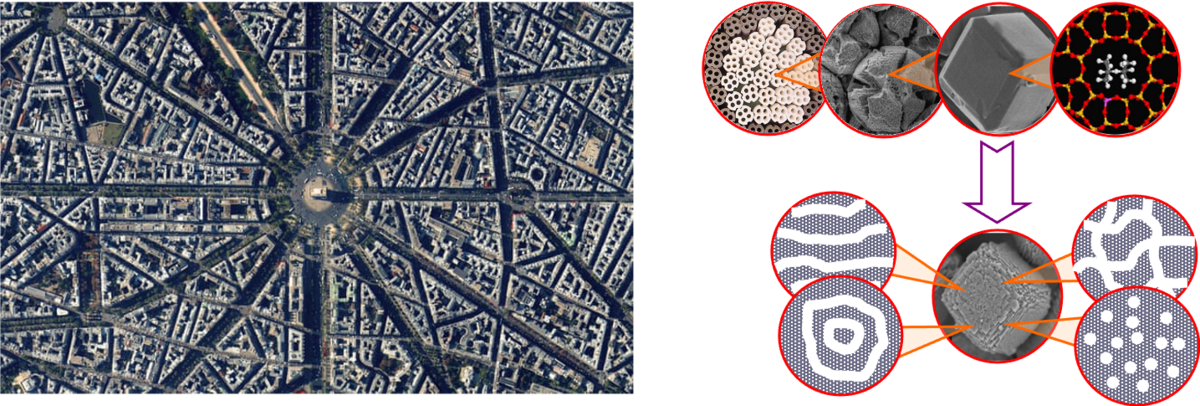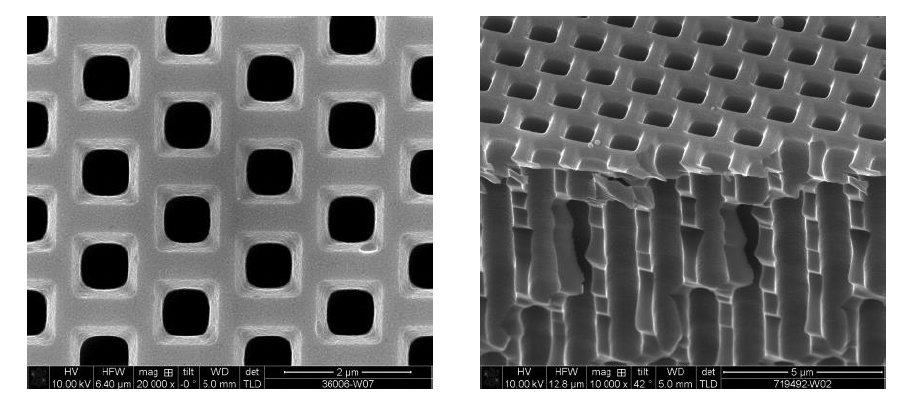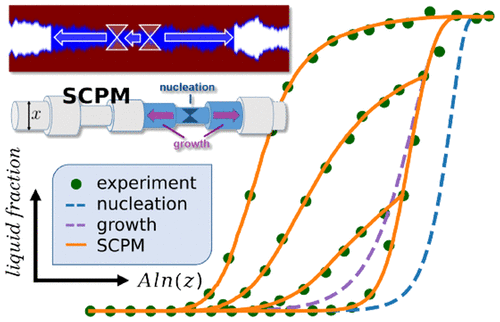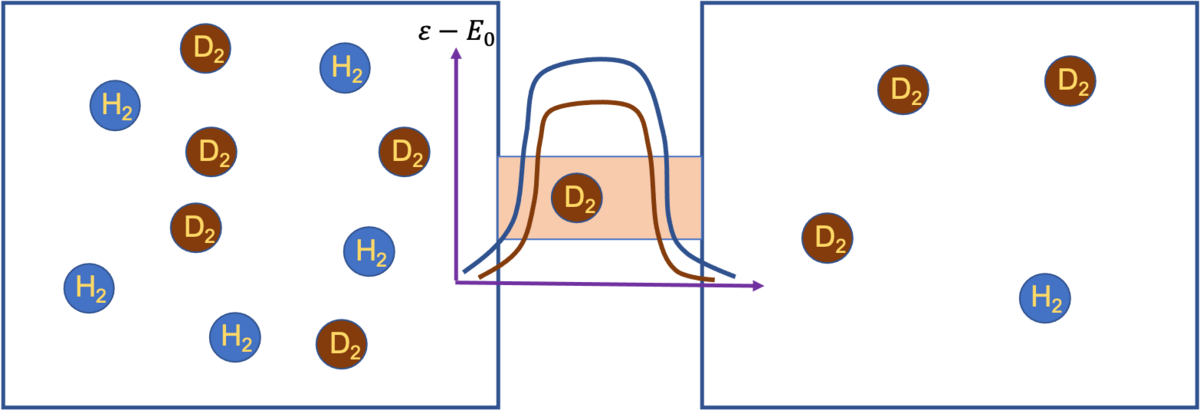The main focuses of AMR are on the application of NMR to tackle interdisciplinary problems related to dynamics and thermodynamics of nano-confined materials. Here we present a representative list of research topics and opportunities for bachelor, master, Ph.D. and post-doc research. Additionally, we provide a list of external scholarship opportunities which may be of immense benefit to support research studies in our group.
The topics for bachelor and master theses are continuously updated. The students are also welcome to contact with their own ideas related with the applications of NMR in a broad context.
1. Molecular transport in hierarchically-structured porous solids
Hierarchically-organized porous materials have recently emerged as a nature-inspired route for optimization of transport properties of a very broad spectrum of materials including among others battery electrodes, sensors, drug delivery systems, catalysts, etc. As one of the most essential properties, a very specific, tree-like organization of the pore space shall provide the most effeicient transport of species to a very large specific surface within the material. Even though it is broadly proven that efficiency of many processes are notably improved with the use of the hierarchically-structured materials, the microscopic mechanisms are still poorly understood. In particular, there is a lack in describig their transport properties and relating them with a particular details of their structure.
Nuclear magnetic resonance is a versatile and most powerfull experimental technique capable of tracing molecular displacements on a time scale from milliseconds to seconds. In this way, diffusion processes of guest molecules in porous ssolids can be studied to establish the structure-transport relationships under various thermodynmaic conditions. We offer to contibute to this exciting field of research. The work, in particular, will be done in cooperation with our partners from the University of Masschusetts (USA) providing us with the hierarchically-structured micro-mesoporous zeolite materials.
Contact: R. Valiullin
2. Diffusion in ordered confined spaces
Magnetic resonance microscopy is a well-established technique to probe microstructure of materials by analyzing translational dynamics of spin-bearing molecules confined in these materials. Over the last decades there has been notable progress done in developing theoretical concepts interrelating the quantities measured using NMR and the underlying structure of the materials. With the recent progress in fabrication of porous materials with accurately tailored pore morphologies, like in macroporous silicon, it has become possible to prove the accuracies of theoretical approaches developed. It turns out that a combination of the magnetic field gradients typically applied in these experiments, diffusive and orientational dynamics of the molecules, and the anisotropic boundary conditions due to the micro-structure, gives rise to a very complex pathways of the magnetization evolution which are not fully accounted for in theoretical models. By profiting from very strong magnetic field gradients accessible in our lab and by applying arrays of micro-pores created in a silicon waifer with very accurately-controlled pore geometry, we may exploit very different regimes emerging in the NMR experiments. The present project will be devoted to experimental validation of the existing theories and provide a better basis for understanding more complex biological ordered objects such as cells or axons.
Contact: R. Valiullin
3. NMR insight into phase transitions in disordered porous solids
Phase transitions of materials confined to nanoporous materials are taking place at substantially different pressures and temperatures as compared to bulk substances. Normally, the shifts of the transition points scale inversely with the confinement size. The phase equilibria in ordered pore spaces are broadly covered and fundamental understanding is gained. However, phase transitions in geometrically-disordered pore systems, which are typically found in nature or are used in industrial applications, still remain far from being understood. This is caused by extremely complex free energy landscape for nanoconfined materials giving rise to all complexities in their behavior. Remarkably, no one even knows how this landscape looks like. We offer contributing to this challenging problem in one of the following fields: (i) by applying NMR cryoporometry technique to probe experimentally solid-liquid equilibria in random nanoporous glasses; (ii) by applying the recently introduced statistically-disordered chain model for obtaining deeper insight into the free energy landscape.
Contact: R. Valiullin
4. Quantum sieving by porous solids
Separation of hydrogen and deuterium is important in light of fusion power generation. This is, however, is a very challenging task, in particular due to their identical sizes. It has been suggested that the separation process can be based on a quantum effect exploiting the difference in thier de Broigle wave lengths. As a result, it is predicted that, quite counter-intuitively, heavier deuterium should exhibit a higher transport rate than lighter hydrogen as soon as they are confined in pore spaces with diameters comparable to the molecular diameters. This effect has not yet found experimental eveidences. Nuclear magnetic resonance being sensitive to local motion may contribute to better understanding of deuterium and hydrogen behavior under conditions where quantum sieving is predicted. This is, however, a challenging experimental task. On the one hand side technical problems such as low temperatures and high pressures need to be solved. On the other hand side, the systems under study pose problems such as extremely short nuclear magnetic relaxation times due to strong spin-rotation interactions. We invite students to contribute to this extremely interesting project. The work will be done in cooperation with Division of Magnetic Resonance of Complex Quantum Solids and Institute for Theoretical Physics.
Contact: R. Valiullin
There are also various other options related to ionic liquids, diffusion in biological tissues, magnetic resonance imagin depending on the personal interests.
- Open PhD position on NMR of complex fluid and solid phase states in nanoporous solids
Applied Magnetic Resonance division of the Felix Bloch Institute for Solid State Physics, Leipzig University has one open PhD position for 3 years (with an option to extend for one more year). The project focuses on explorations of complex fluid and solid phase states created in the pore spaces of nanoporous solids. Even though the occurrence of a large spectrum of such states is well appreciated, understanding of their properties is still lacking. In the project, diffusion and nuclear magnetic relaxation of confined phases will be explored experimentally and will be correlated with the predictions of recent theoretical models. For the experiments, a spectrum of NMR spectrometers ranging from 100 to 750 MHz will be available. The suitable candidates should have university degree in physics and have basic knowledge on NMR
- Unsolicited Applications
For unsolicited applications, all prospective applicants for Ph. D. or Post-doctoral research positions should contact the specific member of our team whose work if of his/her interest.
Internal Scholarships
Leipzig University and the state of Saxony have some scholarship opportunities available for Ph. D. studies. These include:
- Ph. D.
The doctoral student funding and the Postgraduate Scholarships from the State of Saxony. - Post-Doc.
Support for applications for various third-party funding opportunities through Leipzig University as host institution are available are also available.
External Scholarships
As a research-intensive country, Germany has made available many scholarship opportunities from various foundations for gifted students applying for Ph. D., Post-Doc and other research stays in Germany. Below are a few to consider for research funding:
- Doctoral scholarship of the German Academic Scholarship Foundation
- Doctoral scholarship of the Heinrich Böll Foundation
- Doctoral scholarship of the Rosa Luxemburg Foundation
- Doctoral scholarship of the Foundation of the German Industry
- Doctoral Scholarship of the Evangelical Academic Foundation
- Doctoral scholarship of the Evonik Academic Foundation
- Doctoral scholarship of the Friedrich Ebert Foundation
- Doctoral scholarship of the Friedrich Naumann Foundation
- Doctoral scholarship of the Hanns Seidel Foundation
- Doctoral scholarship of the Hans Böckler Foundation
- Doctoral scholarship of the Konrad Adenauer Foundation



